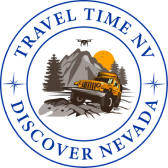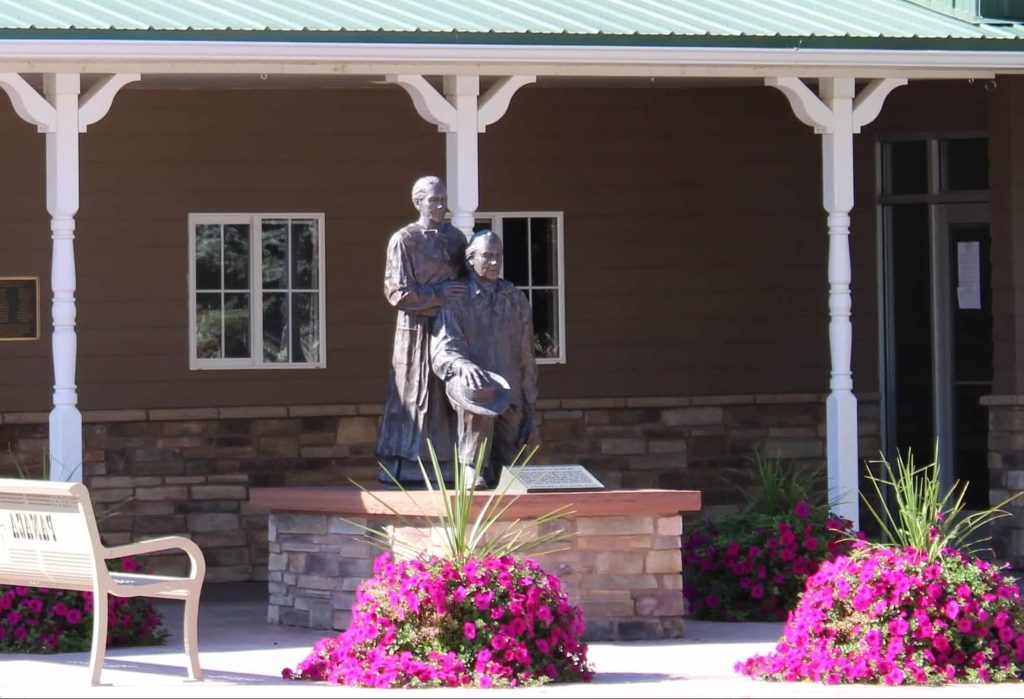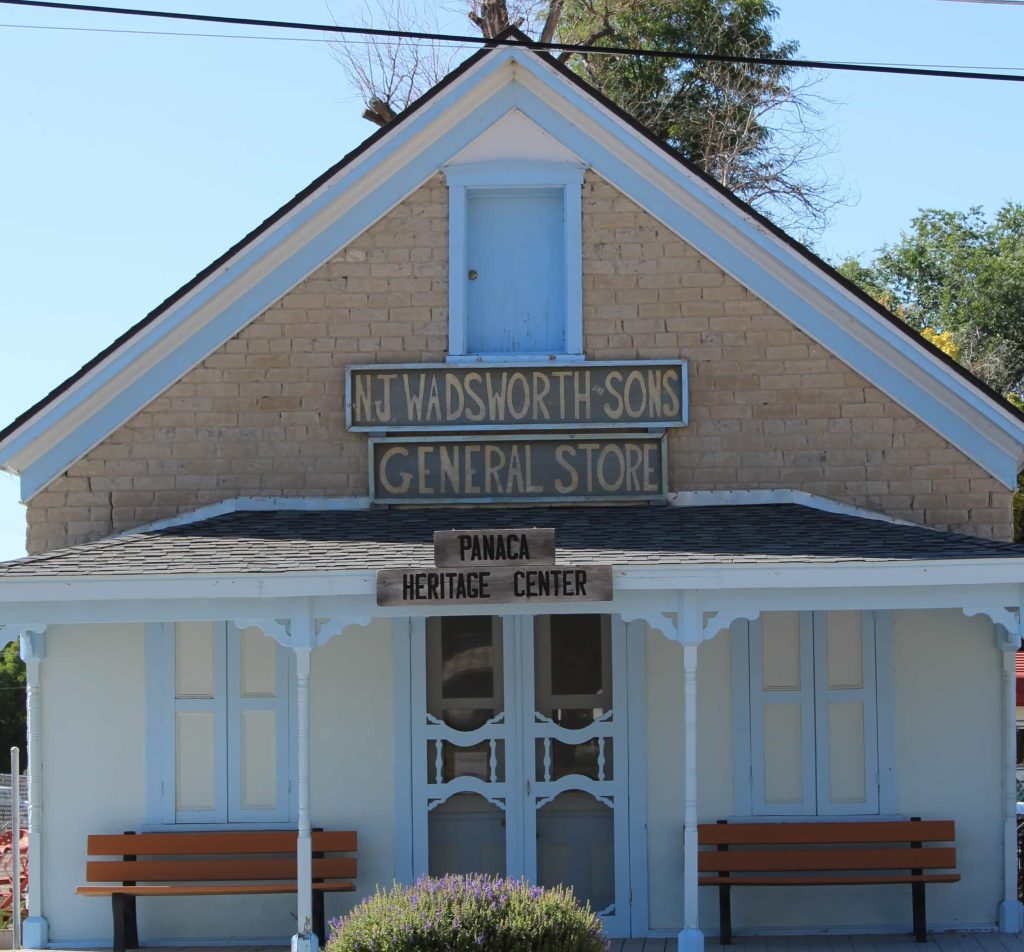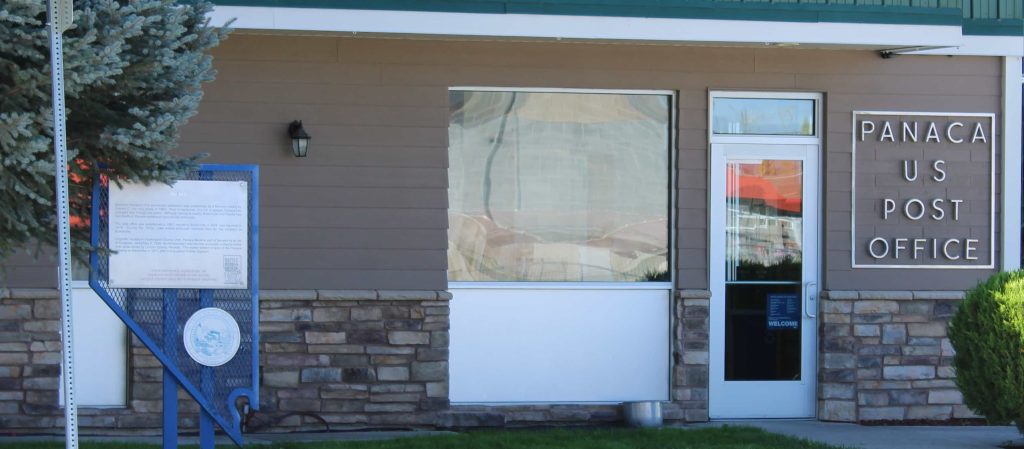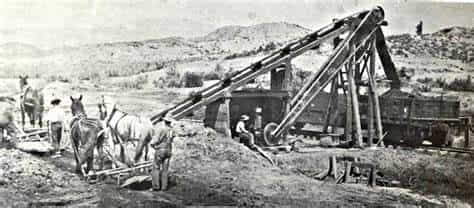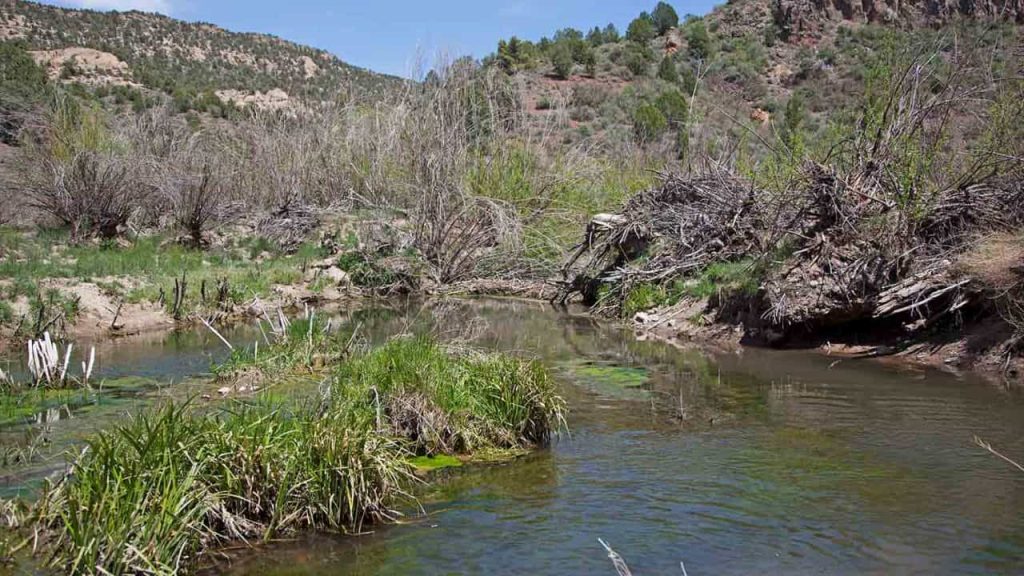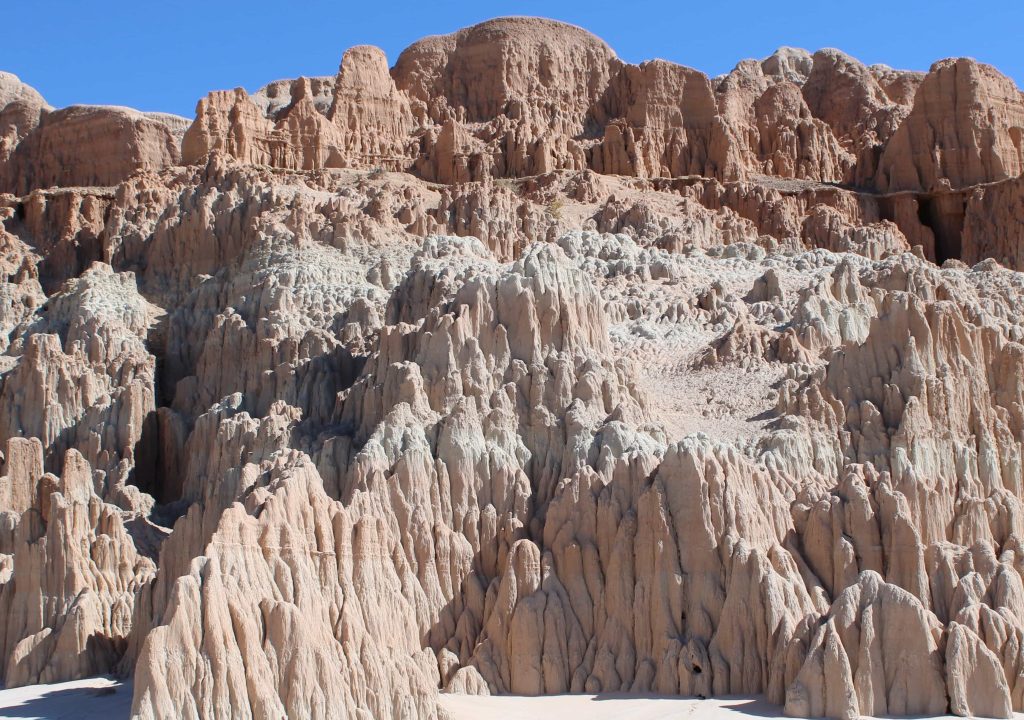Panaca
We can thank Panaca for the Beaver Dam State Park which is just 36 miles east of the town. This rustic environment attracts outdoor enthusiasts to hiking, fishing and camping amount the pinyon, juniper and ponderosa forests, accented by streams, waterfalls and volcanic sedimentary rocks.
Cathedral Gorge State Park is just 4 miles east where you can explore narrow canyons cut deep into the old muds that millions of years ago were at the bottom of the lake. There are trails, an informative information center and camping.
Panaca also gets credit for its Lincoln Country Airport. In the town itself, attractions include the Panaca summit Charcoal Hills, the Panaca Heritage Center and Pioneer Park.
If you want to see a ghost town, travel one mile north to see Bullionville. From 1870 to 1870, Pioche’s mills were built at Bullionville because of the excellent water supply. In1872, the narrow gauge railroad began and the 21-mile long Pioche and Bullionville Railroad was moving ore by 1873. Between 1870 and 1882, the town prospered, but has since been abandoned.
One thing you can’t do in Panaca is gamble – Panaca is one of the two areas in Nevada that prohibit gambling (the other is Boulder City).
No worries – there’s plenty of interesting and historical places to visit in this tranquil town. Panaca is the oldest surviving town in eastern Nevada, rich in tradition and agricultural beauty and has 19th century its fantastic surrounding State Parks.
From Las Vegas, take I-15 to Hwy 93 North for 166 miles
From Reno, take Hwy 50 to Ely and go South on Hwy 93 for 440 miles
The weather can be unpredictable – check well in advance and be prepared for all seasons! Bring layered clothing and rain gear.
As always, make sure your camera batteries are fully charged – you’ll be taking lots of photos, especially if you venture out to the nearby State Parks!
In 1857, Mormons were withdrawing from Carson Valley and Las Vegas leaving their homes and fields to the Indians or miners. They were seeking a new refuge in Meadow Valley, a green oasis about 150 miles north of Las Vegas. The church presidency ordered a search to find a place to hide if the U.S. Army occupied the Salt Lake Valley and tried to persecute them.
Panaca was the first and most successful Mormon community founded in the 1860s in the region that later became eastern Nevada. The settlers thought they were in Utah territory until Congress changed the Nevada-Utah boundary in 1866.
The Panaca framers generally resisted the lure of the mines, but in 1870 found good employment for young men in a mining town 11 miles north, Pioche. There was also an ample market for Panaca’s crops in Pioche. They introduced a communal irrigation system, a co-operative store for the sale and purchase of crops and were able to maintain their community identity during the mining onslaught.
With its many descendants of the original settlers still in residence more than 140 years after their ancestors arrived, Panaca remains one of eastern Nevada’s most idyllic examples of a pioneering Mormon town.
